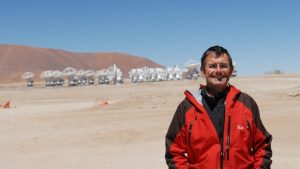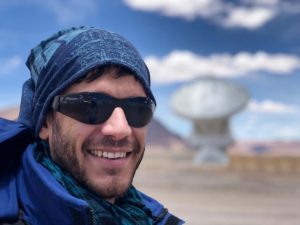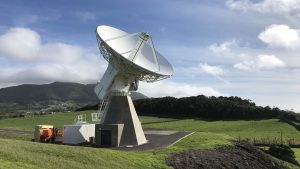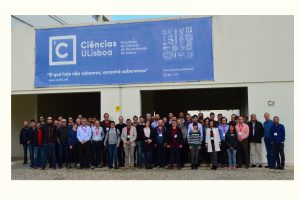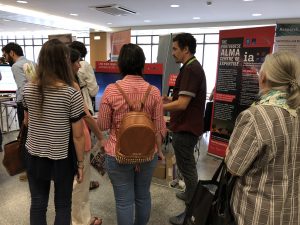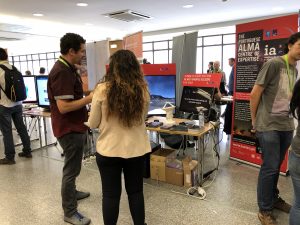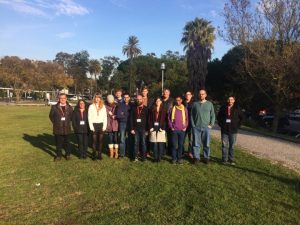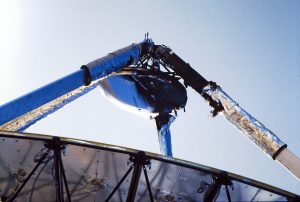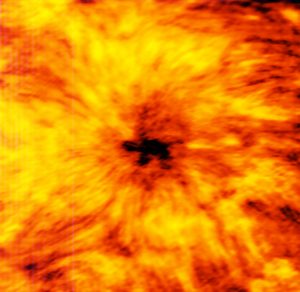The new ALMA director Dr. Sean Dougherty, appointed in February 2018, visited the Portuguese ALMA Center of Expertise at the end of October.
Dougherty is a renowned radio astronomer, former director of the Dominion Radio Astrophysical Observatory, and Canada’s national radio astronomy facility. He also led the construction and delivery of the WIDAR correlator for the Karl G. Jansky Very Large Array (JVLA) and is currently leading the international consortium designing the correlator-beam former for the Square Kilometer Array (SKA).
During his visit PACE members had the opportunity to show our current activities and a brief summary of the past achievements and future challenges. In the afternoon the Director gave a plenary talk at the Faculty of Science of the University of Lisbon, explaining to the audience the successes and the new science opened in the last 10 years by this fantastic facility.
